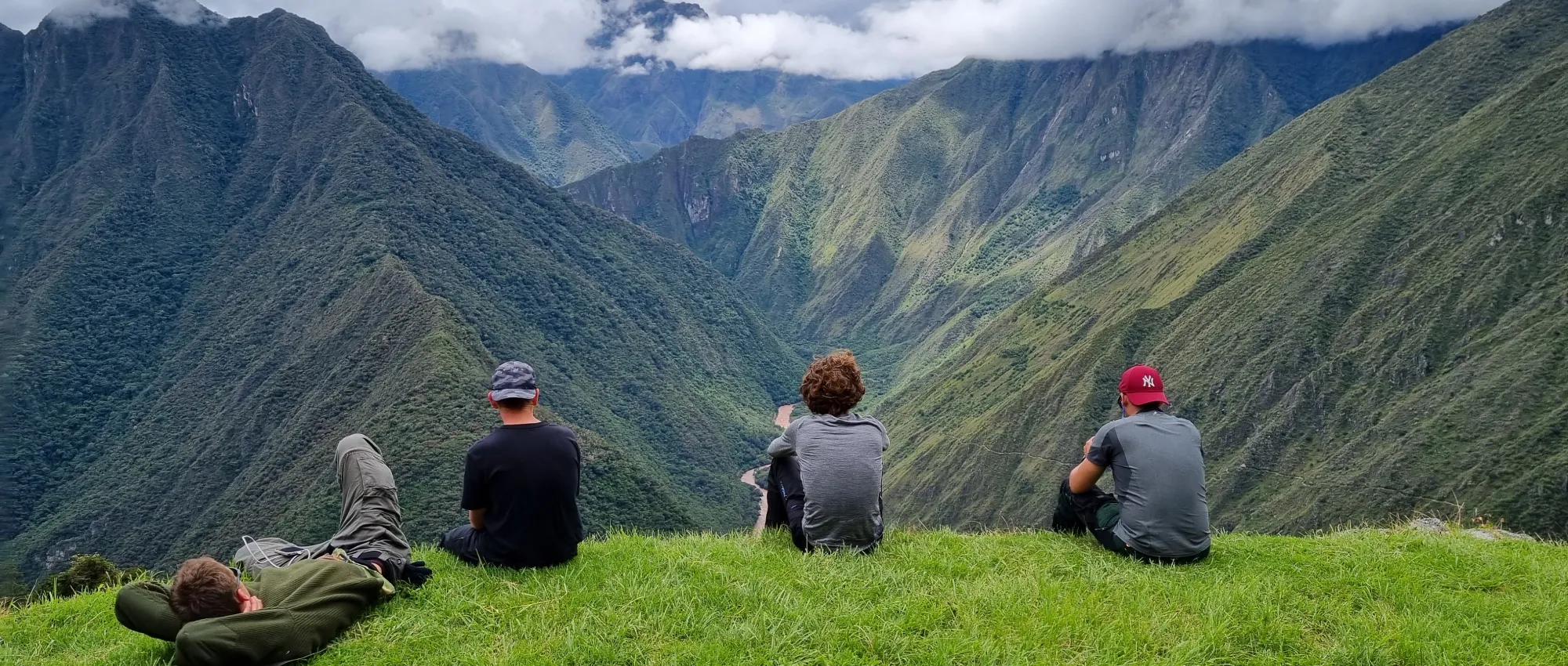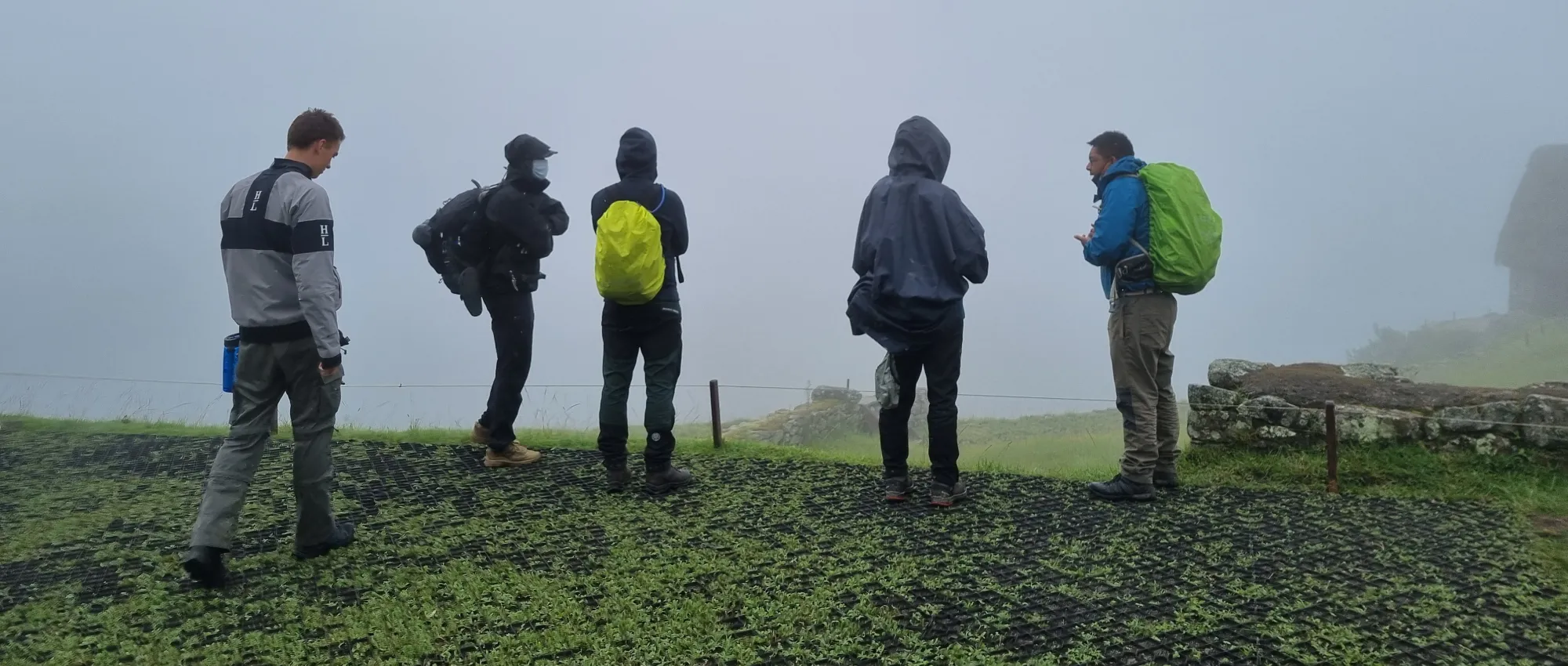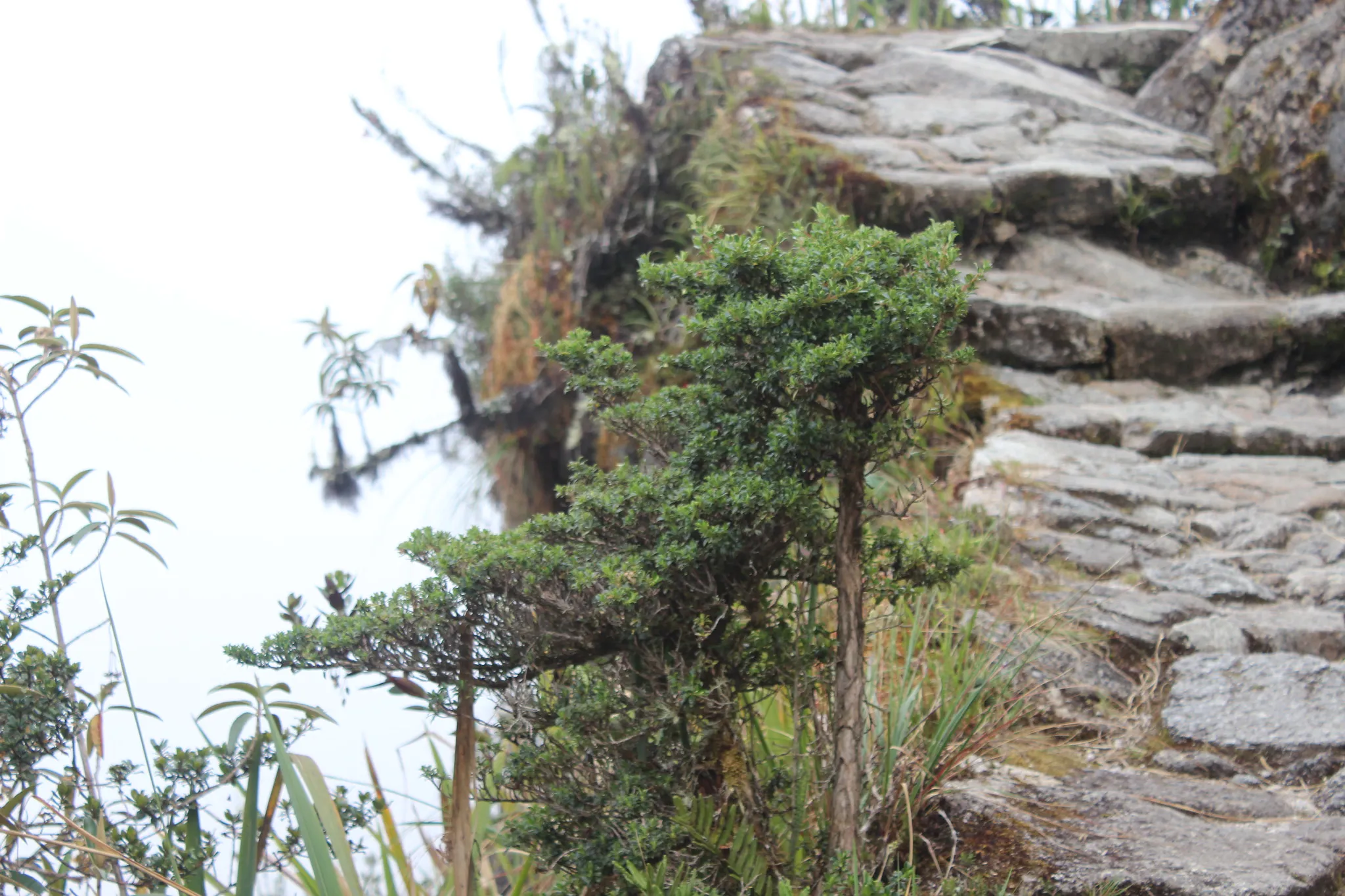Hello, bloggers. Today we are going to talk about a topic that worries many travelers: is it possible to do the Inca Trail if I have vertigo? This is a common question, especially for those who dream of reaching Machu Picchu but fear heights.
In this blog you will find a clear and detailed guide to know what to expect, what parts of the trail may cause discomfort if you suffer from vertigo and what tips can help you live this experience safely.

What is vertigo and how can it affect the Inca Trail?
Vertigo is a feeling of dizziness or instability, often caused by altitude, narrow paths or the view from great heights. It should not be confused with altitude sickness, although both can cause discomfort on routes such as the Inca Trail.
On the Inca Trail, some areas have stone steps, narrow paths and uneven edges, which can affect people who suffer from vertigo. However, not all of the trail is like this, and there are ways to prepare and adapt.
Is it dangerous to do the Inca Trail with vertigo?
The short answer is not necessarily, but it depends on the degree of vertigo you have. Most people with mild to moderate vertigo can do the Inca Trail without major complications, if proper precautions are taken.
There are only a few sections where you walk along steep slopes, but these do not pose a risk if you stay on the trail, go with a professional guide and remain calm.

🧗♂️ Table of vertigo levels (1-7)
| Level | Description | Common symptoms | Suitable for the Inca Trail |
|---|---|---|---|
| 1 | Very mild vertigo | Occasional slight dizziness at moderate altitude | ✅ Yes |
| 2 | Mild discomfort when looking down from a certain height | Slight dizziness on balconies or bridges | ✅ Yes |
| 3 | Discomfort on high stairs or open structures | Mild insecurity, occasional sweating | ✅ Yes |
| 4 | Moderate vertigo on trails with visible canyoning | Persistent dizziness, urge to stop | ✅ Yes |
| 5 | Remarkable vertigo at heights with a feeling of mild panic. | Palpitations, feeling of instability | ✅ Yes |
| 6 | Severe vertigo on narrow roads with steep slopes | Anxiety, trembling, need for assistance or support | ⚠️ Yes with precautions |
| 7 | Extreme or disabling vertigo at any kind of height | Panic, immobility, possible physical or mental blockage | ❌ Not recommended |
✅ Recommendation:
- Level 6 is the maximum tolerable to try the Inca Trail, always with professional accompaniment, specialized guide and routes adapted to your case.
- Level 7 is not recommended, and in that case it is suggested to opt for alternative routes such as the train to Machu Picchu or tours without exposure to heights.
Which parts of the Inca Trail can generate the most vertigo?
Some points where you might feel vertigo are:
- Ascent to Warmiwañusca pass (4,215 m): It is the highest part of the trail, with stairs and panoramic view.
- Narrow trails with slopes: There are some sections where the trail skirts the mountain, but always with enough space to walk safely.
- Descents with steps: After the second day, some sections have steep descents.
No part of the trail has dangerous cliffs or extreme situations, but the sensation of height can trigger vertigo in sensitive people.

Tips for hiking the Inca Trail if you have vertigo
- Talk to your travel agency: Inform them of your condition from the beginning. They can help you organize the right group and provide additional support.
- Walk at a pace that makes you feel comfortable: Don’t rush. The Inca Trail is a personal experience, not a race.
- Avoid looking down in high altitude areas: Concentrate on the trail and keep your eyes straight ahead.
- Walk with trekking poles: They will give you more stability and security in uphill and downhill areas.
- Consult your doctor before the trip: If your vertigo is severe, it is best to evaluate your case with a professional.
- Relax and breathe: Many times, vertigo is aggravated by anxiety. Breathing techniques or meditation can help.
Is there an alternative to the Inca Trail for those who suffer from vertigo?
Yes! If your vertigo is very strong and you prefer a gentler option, you can consider these alternatives:
- Short Inca Trail (2 days): It has fewer steep sections and is less demanding.
- Train route to Machu Picchu: Enjoy the view without the need to walk on high trails.
- Lares Trail or Salkantay Trek: Depending on the itinerary, some of these routes may be more accessible, although they should be checked with the agency.
Conclusion:
Having vertigo does not mean you cannot do the Inca Trail, but it does mean being prepared, knowing yourself and taking the necessary precautions. Thousands of people with mild vertigo have completed this trek and lived one of the most memorable experiences of their lives.
Consult your doctor, choose a responsible tour operator and trust yourself. The Inca Trail to Machu Picchu is a challenge, yes, but also an opportunity to better yourself.
Contact Us:
For more information, please contact us DREAMY TOURS, we will be happy to answer all your questions about Peru, Bolivia and Chile.
We specialize in tours and travel packages as a Travel Agency. If you need information, please contact us.
We offer tours, excursions – Peru – Bolivia – Chile:










